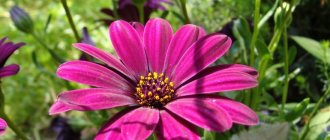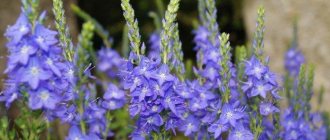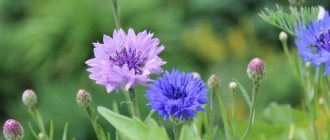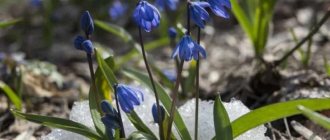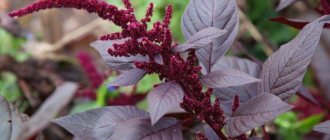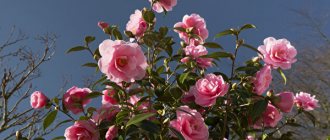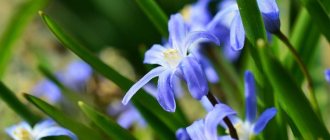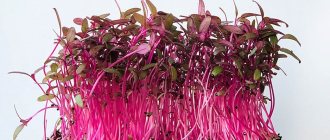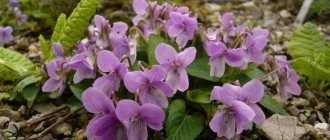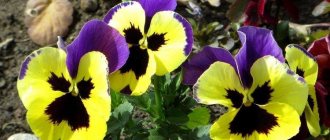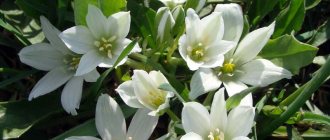These graceful but often overlooked ornamental perennials have few special requirements but can charm with their distinctive flowers and colorful foliage. In the wild, they are often found in swamps and bushland. These perennials can grow successfully in shady, damp places, near ponds and in the company of other moisture-loving plants. In this article we will tell you how to grow Rogers - planting and care in open ground, and present photos of species in gardens.
general information
Rogersia is a moisture-loving and shade-loving plant native to the mountainous regions of Asia. It is valued for its large carved leaves, its ability to grow quickly and occupy the entire space. For the flowering season, the lush green crown is complemented by tall inflorescences.
Rogersia has a strong taproot, which gradually grows laterally with age. The average height of inflorescences is up to 1.5 m, but branches with leaves are usually lower. Erect branched shoots form a dense shrub.
The diameter of Rogers leaves easily reaches 50 cm. They can be of different shades - from green to red and bronze. There are varieties that change color throughout the season. Rogersia blooms in mid-summer, and after wilting, the leaves begin to grow even more actively.
Photo: krugosvetka.icu
Description of the plant
Rogersia is a genus of plants belonging to the Kamchatka family (Stonehammeraceae). Includes 6 species that occur naturally near streams and in moist forests in the Himalayas - Nepal, China. They are often grown in damp places in gardens and parks.
The scientific name of the genus honors American Admiral John Rogers (1812-1882), who led the expedition to China and Japan in the 1850s that discovered this plant.
Perennial plants grow up to 1 meter in height, forming spreading, dense bushes. Majestic, strong leaves are topped with branched inflorescences dotted with tiny flowers. The plants grow from underground, scaly rhizomes.
Morphology:
- The leaves are long-tailed, drooping in winter, usually palmate, less often pinnate. The petiole has from 3 to 10 leaves with a two-toothed edge, pointed at the apex. The plate has many veins.
- The flowers are numerous, small, collected in panicles. Petals are usually 5 (rarely 4, 6 or 7) green, whitish, pink or red. Stamens have 10 pistils.
- The fruit is a capsule that opens with two or three valves. The seeds are small.
Types of Rogersia
Basically, Rogersia species differ from each other in the shape and size of the leaves. Let's highlight the most interesting and decorative ones!
elderleaf rogersia
As you can easily guess, the leaves of this Rogersia plant resemble a larger version of elderberry leaves. They are finger-shaped, but at the same time completely dissected into segments.
Photo: botanichka.ru
Nepalese Rogers
The leaves are collected on a long petiole at an impressive distance from each other. Because of this and due to their ovoid shape with pointed ends, they appear even more elongated.
Photo: rastenievod.com
Horse chestnut-leaved Rogersia
The following species resembles the leaves of a common urban chestnut. At first glance, they can even be confused, but if you put the two samples side by side, the differences become obvious. The height of the bush is up to 1 m, and the peduncles are up to 1.2 m.
Photo: m.nn.ru
Rogersia Henrici
This is the most vibrant species with very rich green foliage. Rogersia Henrici is also not afraid of the bright sun, and only changes the shade of the inflorescences, depending on the conditions.
Photo: gardenschool.ru
Feathery Rogersia
This species also has dissected leaves, but the individual segments are narrower and elongated. The edge of the leaf plate is almost smooth, but the veins are raised. This is a fairly compact species up to 60 cm tall.
Photo: water-vao.ru
Rogersia centifolia
A very unusual decorative appearance with a complex, chaotically jagged edge of the leaves. Due to their special shape, they resemble roughly cut inverted drops. Height – up to 1.5 m.
Photo: rastenievod-007.blogspot.com
Monarda (50 photos): types, planting and care in open ground
Application in landscape design
Rogersia in landscape design is quite often used by gardening specialists. The popularity of the plant in our country, however, has not yet reached foreign levels; few people are familiar with this exotic flower. Rogersia will look ideal in a rocky garden such as a rockery, as well as along ponds or between trees. Placed as a hedge or along borders, the plant will look no less attractive.
The main condition is not to plant it in a dry place in direct sunlight. Rogersia attracts the eye, both in a single planting and next to such neighbors as fern, bell, bergenia, geranium, astilbe, hosta, maple leaf, ligularia, with green ground covers.
A contrasting composition of Rogersia and decorative conifers will look impressive and fresh. A duet with thuja, juniper, and spruce will be good.
Rogers will also not get lost next to the flower garden - magnolia, irises, and daffodils will make a good neighborhood.
Thanks to its exoticism, which is not familiar to the eye, the flower will stand out everywhere and look like an accent spot.
Rogers care
The spreading perennial has perfectly adapted to the conditions of our latitudes. The main thing is to choose the right site and provide the plant with all the nutrients!
Temperature and lighting
Rogersia prefers shade or, at most, a few hours of sun in the morning or evening. This is a relatively winter-hardy plant if provided with shelter. Be sure to avoid drafts and ventilated areas.
Photo: greendacha.club
Watering
The soil around Rogers should not be allowed to dry out completely. Therefore, water it regularly, and even spray it at the height of summer. To preserve moisture, mulch the soil around the bush.
Photo: pinterest.ru
The soil
For such intensive growth of Rogers, a lot of strength is required, so the soil must first of all be nutritious. Avoid areas with close groundwater, but an open body of water nearby is only a plus.
Photo: terranovanurseries.com
Fertilizers and fertilizing
Even before planting, humus, compost and peat are added to replenish the soil. If the soil is sufficiently nutritious, then additional fertilizing is not needed. Otherwise, add compost at the beginning of spring, and use mineral fertilizers 2 more times during the season.
Photo: ratatum.com
Wintering
Rogersia overwinters right on the site, but it is important to protect the renewal buds from frost. In the fall, cut off the leaves and cover the plant with compost. In the spring, remove the cover, but as it gets colder, use a non-woven blanket to prevent the buds of the inflorescences from freezing.
Photo: svadba1000.ru
Calendula (50 photos): types, planting and care in open ground
The nuances of successful flower breeding
When planning to purchase a plant, you should remember its historical place - China. This will be a reminder of some of the flower’s preferences for climatic conditions. In order for Rogers to please its owners, it is worth adhering to certain planting rules.
Firstly, choose the right place for planting. Since the Chinese beauty cannot stand the hot sun, preferring darkened areas, an open, ventilated place is not for her.
Secondly, Rogersia has a spreading crown. This should also not be forgotten when planting. In addition, Rogers can reach its true size only in the third year of life. So you need to think about its green, blooming neighbors.
Thirdly, having chosen a good place, you should not plant it with different varieties of Rogers. Since growing several species in one area will not produce high-quality seeds for propagation. Over-pollinated samples are already a loss of true beauties.
Fourth, pay due attention to the soil. Suitable composition - peat, humus, compost
This mixture will be an ideal soil for planting. Be sure to pour drainage into the hole.
After planting the plant, the soil should be mulched with peat and mulch should be systematically added, since Rogersia is a fairly powerful plant that can deplete the soil. So you should fertilize the soil regularly, especially during the period of leaf growth and flowering.
Fifthly, you should pay attention to the period of planting Rogers. This can be done in spring and autumn
However, experts recommend the autumn period, since after planting flowers, winter comes. After overwintering, the plant will delight with more generous flowering.
Planting and propagation
Propagating Rogers by seeds is a difficult and not the most rewarding process, because over several months you need to repeatedly change the temperature regime and the place for the containers. And such a plant will bloom no earlier than in 3 years.
In the summer, healthy, strong leaves with a petiole and the so-called heel are rooted. Treat it with a stimulant and root it directly in a light, moist soil mixture, and then transplant it into open ground with a ball of earth. Young seedlings are planted to a depth of 6-8 cm and at a distance of 50-80 cm.
An adult bush can be very easily divided, and at the same time rejuvenated. It is better to do this in the spring and immediately plant the cuttings on the site. During autumn propagation, the divisions are planted in containers and left indoors until spring. The rhizome should not be allowed to dry out during the replanting process.
Photo: mirfermera.ru
Myth 3: A tree with decorative bark will change the winter landscape
One trunk, even if very beautifully colored, is unlikely to change the picture of the winter garden. Imagine the coloristic effect of a lone birch tree in a field, then of a three-trunked one and, finally, of an entire birch grove - and you will understand what we are talking about.
How to fix the situation:
If you want your garden to impress guests even in winter, use multi-stemmed forms of ornamental bark plants or plant them using the bouquet planting method.
Three- or four-trunked Maak bird cherry trees, birches, greenbark maples, “Russian eucalyptus” poplars in winter will produce a much greater effect than single-trunked ones.
Ornamental bark shrubs are multi-stemmed by nature, but they should be regularly rejuvenated by planting them on a stump. It is on young shoots that the bark is the brightest. Such shrubs can be completely neutral in the summer and not attract attention to themselves, but when they shed their leaves, they immediately become almost the main accent. Such a change in points of attraction is very favorable, especially in small gardens.
Diseases and pests of Rogers
Rogersia is resistant to almost all diseases, except root rot due to stagnant moisture. Such a bush gradually darkens, withers and withers. It must be immediately dug up, the rotted parts of the rhizome removed and replanted in a new location.
If red, bumpy spots appear on the leaves, this is rust. Cut off diseased parts of the plant and treat it with fungicides. It is better to do all this in the morning or afternoon, so that the Rogersia dries before the evening.
The juicy large leaves are loved by snails and grape slugs. They will first have to be removed mechanically, and then the planting will have to be sprayed with special preparations.
Photo: na-dache.pro
Scilla (50 photos): types, care and planting in open ground
Rogersia – photo
Despite the fact that Rogersia is a flowering plant, it is valued precisely for its spectacular leaves. Just look at how impressive their size is!
Photo: windstonefarm.co.za
Photo: svadba1000.ru Photo: unipack-ug.ru Photo: avalonit.net
Photo: ratatum.com
Photo: havlis.cz
Photo: sad-dom.com
Photo: mykaleidoscope.ru Photo: mykaleidoscope.ru
Photo: komnatniecveti.ru
Photo: kvetki-gorki.by Photo: instagram.com Photo: soulesgarden.com Photo: timiryazewets.ru
Photo: ladyflor.ru Photo: flowertimes.ru
Photo: idoom.ru
Photo: flo.discus-club.ru Photo: pesiq.ru
Photo: sup-kartoshka.ru Photo: lubvit.ru
Photo: fermer.ru
Photo: sad-mos.ru
Photo: geliurojus.lt
Photo: pitomnik45km.ru
Did you like the post? Subscribe to our channel in Yandex.Zen, it really helps us in our development!
